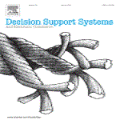The paper presents an approach for building consistent and applicable clinical decision support systems (CDSSs) using a data-driven predictive model aimed at resolving the problem of low applicability and scalability of CDSSs in real-world applications. The approach is based on a threestage application of domain-specific and data-driven supportive procedures that are to be integrated into clinical business processes with higher trust and explainability of the prediction results and recommendations. Within the considered three stages, the regulatory policy, data-driven modes, and interpretation procedures are integrated to enable natural domain-specific interaction with decisionmakers with sequential narrowing of the intelligent decision support focus. The proposed methodology enables a higher level of automation, scalability, and semantic interpretability of CDSSs. The approach was implemented in software solutions and tested within a case study in T2DM prediction, enabling us to improve known clinical scales (such as FINDRISK) while keeping the problem-specific reasoning interface similar to existing applications. Such inheritance, together with the three-staged approach, provide higher compatibility of the solution and leads to trust, valid, and explainable application of data-driven solutions in real-world cases.
翻译:本文介绍了一种方法,用于建立一致和适用的临床决策支持系统(CDSS),使用一种数据驱动的预测模型,旨在解决在现实世界应用中CDSS适用性和可扩缩性低的问题,该方法基于三阶段地应用特定领域和数据驱动的支持程序,这些程序将被纳入临床业务流程,具有更高的信任度和对预测结果和建议的可解释性。在这三个阶段中,监管政策、数据驱动模式和解释程序被整合在一起,以便与决策者进行自然的域别互动,从而按顺序缩小明智决策支持的重点。提议的方法使得CDSS的自动化、可扩缩性和可释性更高水平。该方法在软件解决方案中实施,并在T2DM预测案例研究中测试,使我们能够改进已知的临床规模(如FICRISK),同时将特定问题推理界面与现有应用相类似。这种继承与三阶段方法一起,使解决方案更加兼容,并导致在现实世界案例中对数据驱动的解决办法进行信任、有效和可解释的应用。




